I’m thrilled to be chatting to the lovely Patti Callahan and sharing the cover of the UK/Australian edition of her wonderful novel, Becoming Mrs Lewis. This edition is only available outside of the US and Canada and has been edited with an Anglicised lens, which is wonderful news to those of us who get a little agitated by little things that often communicate an American has written a novel set in Britain or Australia. You can even tell that from the cover! Anyone know what hints that this has been tailored to English/Australian readers?
My book club will be diving into this story later this year and we will be reading this version. I think the cover is delightful.
Patti shares some lovely insights into writing this love story, so enjoy our bookchat!

The love story of C. S. Lewis and his only wife, Helen Joy Davidman Gresham, was improbable-and seemingly impossible. Their Eros-story led to some of C. S. Lewis’s greatest works on love, grief, and faith, yet Joy is most commonly known for how she died. Becoming Mrs. Lewis allows us to see how this brilliant and passionate woman lived-and why she stole Jack’s heart.
In a most improbable friendship, she found love. In a world where women were silenced, she found her voice. In a God beyond the religion of her birth, she found faith.
From New York Times bestselling author Patti Callahan comes an exquisite novel of Joy Davidman, the woman C. S. Lewis called “my whole world.” When poet and writer Joy Davidman began writing letters to C. S. Lewis-known as Jack-she was looking for spiritual answers, not love. Love, after all, wasn’t holding together her crumbling marriage. Everything about New Yorker Joy seemed ill-matched for an Oxford don and the beloved writer of Narnia, yet their minds bonded over their letters. Embarking on the adventure of her life, Joy traveled from America to England and back again, facing heartbreak and poverty, discovering friendship and faith, and against all odds, finding a love that even the threat of death couldn’t destroy.
In this masterful exploration of one of the greatest love stories of modern times, we meet a brilliant writer, a fiercely independent mother, and a passionate woman who changed the life of this respected author and inspired books that still enchant us and change us. Joy lived at a time when women weren’t meant to have a voice-and yet her love for Jack gave them both voices they didn’t know they had.
At once a fascinating historical novel and a glimpse into a writer’s life, Becoming Mrs. Lewis is above all a love story-a love of literature and ideas, a love of God, and a love between a husband and wife that, in the end, was not impossible at all.
Bookchat with Patti Callahan
What first appealed to you about writing Joy Davidman’s story?
Their love story is so inspiring and improbable that I wanted to understand it. I wanted to know how these two came to find each other when they had lived on opposite sides of the Atlantic. Joy Davidman was an ex-communist, ex-atheist born and bred in NYC. Meanwhile, C. S. Lewis – one of the great Christian apologists of his day, was an Oxford don in a man’s world. I started my research. At first I thought I was writing about the improbable love story, but then I realized that I was actually writing about the fiery transformational journey of an incredible poet and writer. Joy’s life story, and how she overcame hardship, inspired me to tell her story from her point of view.
What personality trait/characteristic of Joy moved you most?
Her courage. And not the kind that battled warriors but the type that allowed her to become who she was meant to be. The kind of bravery that stood up to familial and societal expectations and burst through the strictures others place around her. At times it looked like her courage was ill-fated, but she was persistent and resilient.
Describe your book in 5 adjectives:
Fiery; complicated; loving; heartbreaking; transformational.
Were you daunted by the responsibility of writing about the life of a real person?
Daunting indeed! I combatted it alternately with loads of anxiety and then with abject denial of what and who I was really writing about. Mostly I had to tell myself that I was just writing another novel (I had already written twelve). But I also knew that wasn’t true. This cognitive dissonance was a constant juggling act as I researched and wrote for years. I believe in the power of story to tell a truth and that carried me through. Also, Joy, she was with me in her words, her letters, her poetry and her essays. Her story needed to be told and often we come to know our historical figures through fictional narrative and then, if we so desire, we can go deeper and farther into their lives. (At the end of the novel, I attach a suggested reading list if readers want to know more).
Also, I tackled the task with love. I so admired her, and of course Lewis, that I approached the pages with humble reverence, but also with the knowledge that they were both human and their pedestals (if they had ones at all) were just as cracked as anyone’s. I didn’t want to portray the idol-marble image, but instead the woman and the man in their daily struggles and doubts and fears, as best I could on this side of their lives.
I know, because I have loved Lewis’s work for all of my life, that we can be proprietary over the authors we admire. I approached this work with trepidation – we can’t all agree on our own lives much less someone else’s. We must know that the “truth” can be told in both fictional narrative and biographical fact, but our opinions and our conclusions are ours alone.
There is an essay Joy once wrote called “On Fear” and in that essay she asks this question, “If we were ever to grow brave, what on earth would become of us?” And I believe she answered that question with her life. I wanted to be as brave as she was – and this thought pulled me through every doubt.
What research discovery did you make that surprised you?
I’d had no idea how very accomplished she was as a student, a poet and as a writer. Joy was a genius – quite literally. She read by three years old; graduated high school by fourteen years old and college by nineteen. She finished her master’s degree at Columbia in under a year and a half. She won the Yale Younger Poet’s Award – and on and on. Why had we never heard these amazing things about this extraordinary woman? Why had she been buried in the shadowlands? I wanted to bring her into the light – show the woman beside the man, C. S. Lewis.
How different did you find writing a biographical novel compared to a novel straight from your imagination?
There were parts that were exactly the same – butt in chair and get the work done, for example. I still needed to find my character’s motivation and story ARC just as in any novel. I had to write and rewrite and rewrite, as usual. The biggest difference was the intense research as I wanted to stay true to the factual skeleton of her life, and the emotional truth that she bares in her letters and poetry.
Which character did you enjoy writing most?
Oh, Joy! Absolutely. We’ve been “living together” for years now and the more I know her, the more I enjoy her.
Which character gave you the most grief?
C. S. Lewis. That man’s armour was thicker than any I’d ever seen. His inability to allow himself to feel what was already alive in his life was infuriating. (I’m sure even more so for Joy in real life). I spent a very long while trying to understand why he acted the way he acted; why he was so reticent. It was a journey, for sure.
What emotions did you experience while writing this story?
All of them. Quite literally name a predominate emotion, and I felt it while I was writing this novel. Elation at finding nuggets that told the truth. Despair when I couldn’t find my way through the emotional layers of Lewis. Grief when Joy was diagnosed. Joy when they married. Sadness for her boys. Anger at Bill. And more and more.
Do you anticipate writing another biographical novel in the future?
I would love to, but it has to be about someone who captures my heart the way Joy did. Not sure when or if that will happen :). But I am diving deep into historical fiction. The novel I am working on now is about a shipwreck in the 1800’s. So fascinating!
Patti Callahan (who also writes as Patti Callahan Henry) is a New York Times bestselling author. Patti was a finalist in the Townsend Prize for Fiction, has been an Indie Next Pick, twice an OKRA pick, and a multiple nominee for the Southern Independent Booksellers Alliance (SIBA) Novel of the Year. Her work has also been included in short story collections, anthologies, magazines, and blogs. Patti attended Auburn University for her undergraduate work and Georgia State University for her graduate degree. Once a Pediatric Clinical Nurse Specialist, she now writes full time. The mother of three children, she lives in both Mountain Brook, Alabama, and Bluffton, South Carolina, with her husband. Visit her online at patticallahanhenry.com; Instagram: pattichenry; Facebook: AuthorPattiCallahanHenry; Twitter: @pcalhenry.
Relz Reviewz Extras
Visit Patti’s website
On tour with Patti and Mrs. Lewis
Buy at Amazon: Becoming Mrs. Lewis or Koorong

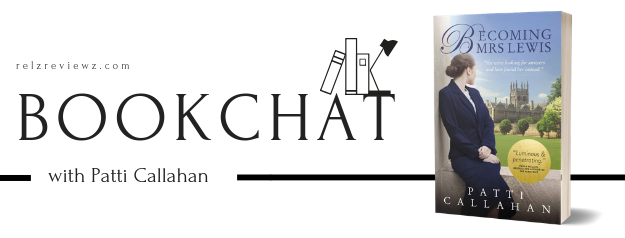
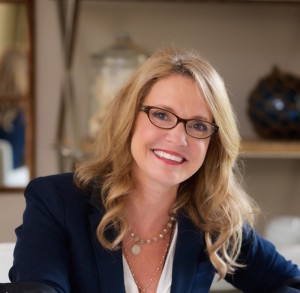
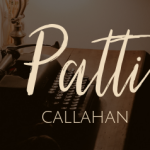
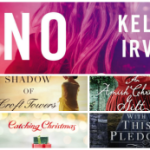
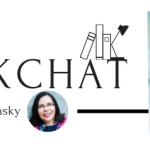
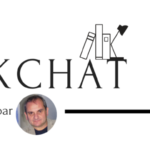
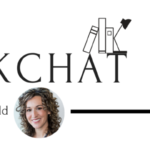



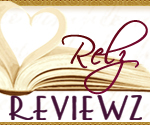

May 22, 2019 at 9:53 am
Hey Patti and Rel! I loved Becoming Mrs. Lewis!!!!
Thank you for this fun book chat!